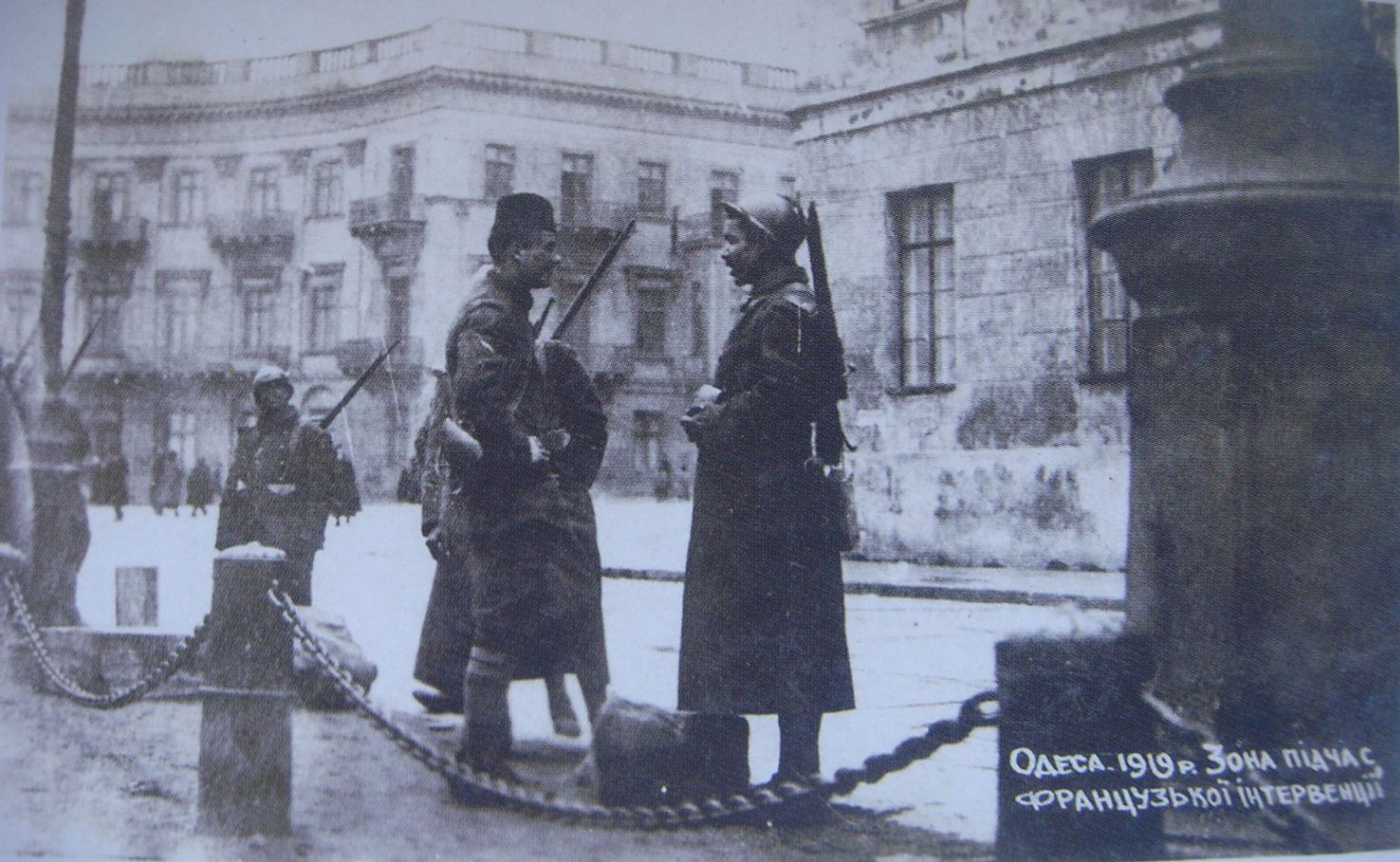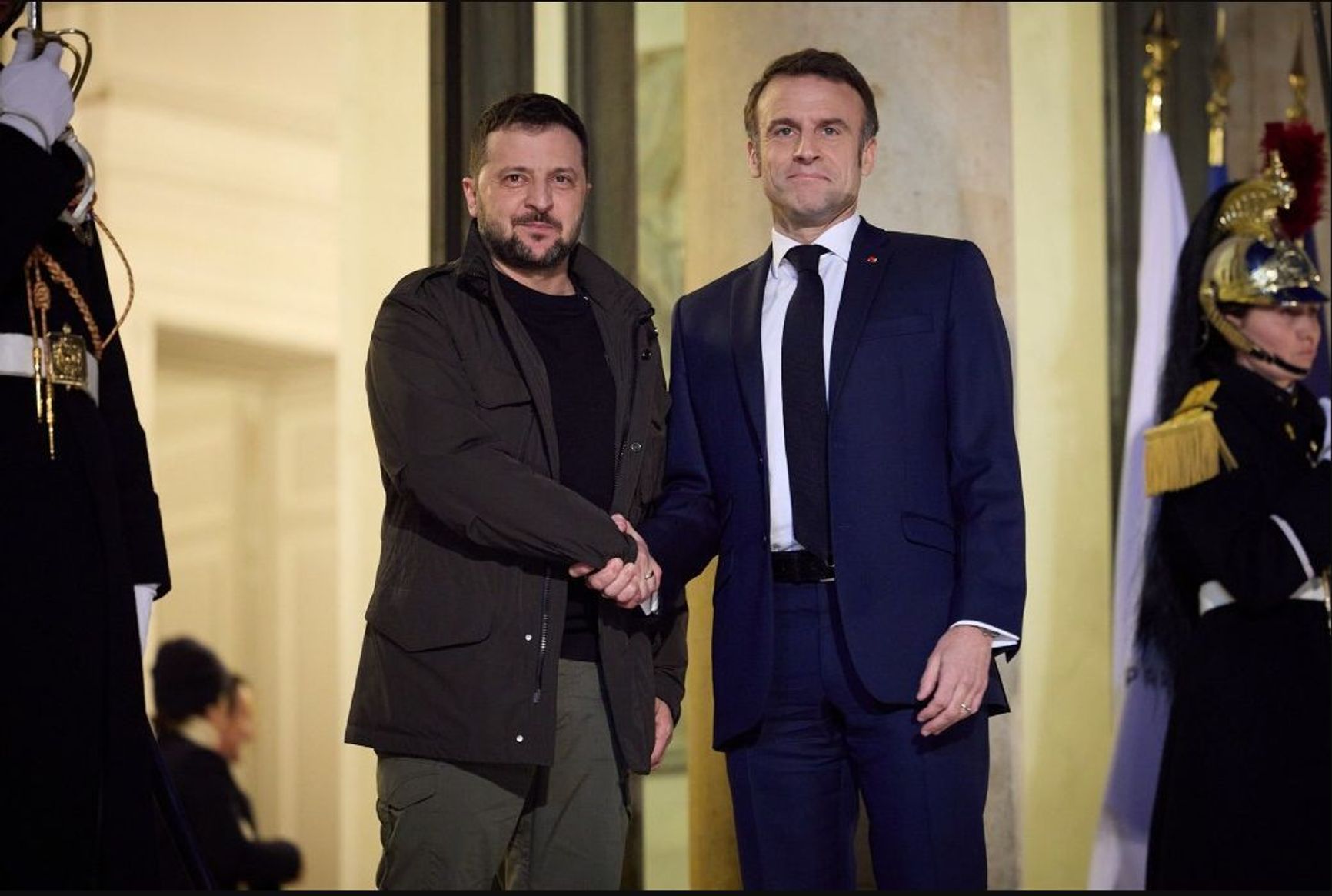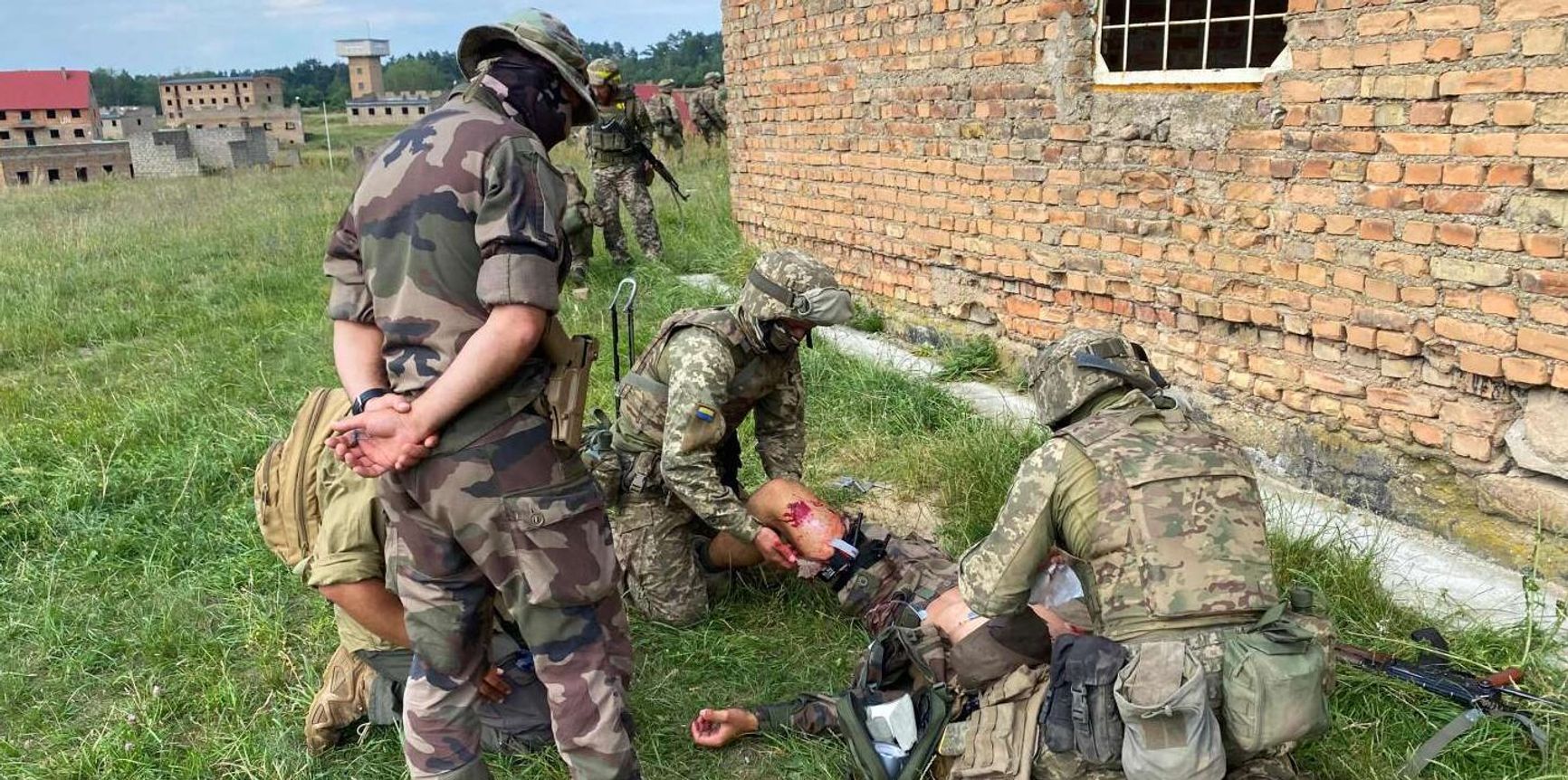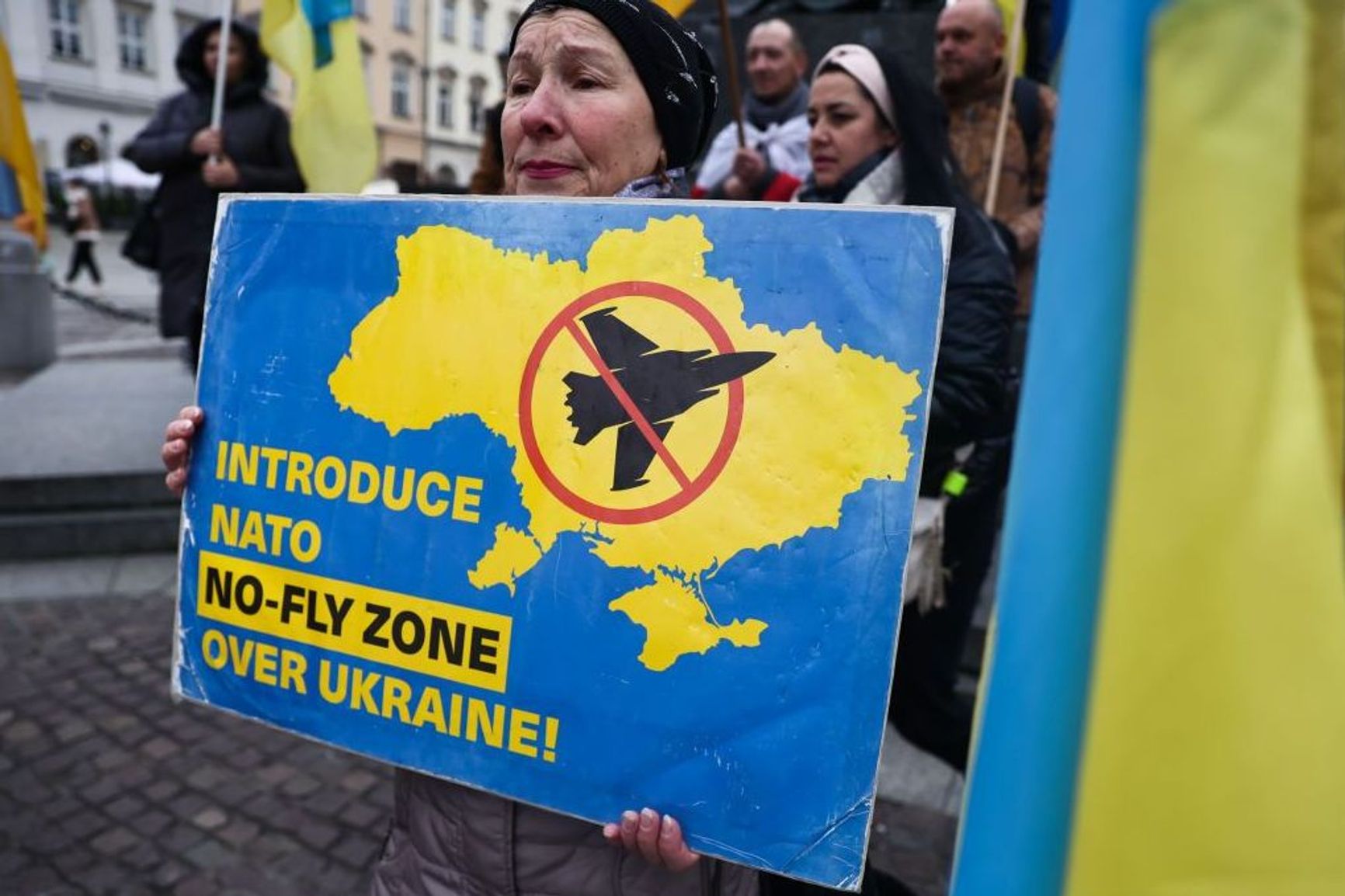

Many EU and NATO leaders have distanced themselves from Emmanuel Macron's recent comments about the possible deployment of French troops to Ukraine — but not all of them. Western parliamentarians and journalists are discussing the options for sending in troops, while the mood in Russian pro-war media ranges from dismissive to alarmed. Meanwhile, the French military is preparing for an unusual war with a near-peer enemy, relearning skills such as digging trenches. However, most experts believe that “boots on the ground” fighting alongside the Ukrainian army are most likely out of the question. But deploying troops to the European border with Belarus, training the Ukrainian military in country, and offering assistance with demining, defensive fortifications, and cyber defense would be a great help and would not threaten direct escalation, especially since the Kremlin does not have the resources for bringing to war directly to NATO.
Content
In the footsteps of emperors and presidents
A post-Iraq “coalition of the willing,” and possible obstacles
Possible scenarios: from instructors to digging trenches
The Russian response and risks of escalation
In the footsteps of emperors and presidents
When discussing the potential for France to enter the war against Russia, many commentators inevitably recall Emperor Napoleon Bonaparte's unsuccessful campaign of 1812. However, there are other episodes in the history of French intervention in Eastern European affairs, motivated — as they are today — by the need to contain Russia and support a popular struggle for independence. In the mid-nineteenth century, Polish rebels enjoyed enormous support in France, establishing a government-in-exile at the Hôtel Lambert in Paris. The brutal suppression of the uprising of 1831 turned European public opinion against St. Petersburg (then the capital of the Russian empire), and when Nicholas I threatened war against Turkey, demanding the protection of the rights of the Christian and Slavic population living under the sultan's rule, France, led by Emperor Napoleon III (Napoleon I's nephew), followed the UK in vocalizing opposition to the Czar.
Most of the allied troops on the ground during the siege of Sevastopol in the Crimean War of 1853-1856 were Frenchmen, who performed better than the Grande Armée of 1812 — thanks in large part to long-range rifled weapons, which were head and shoulders above Russia’s smoothbore guns, as well as high-quality winter uniforms. Having learned from the bitter experience of the previous war, the French made warm overcoats for their troops, nicknamed the “Crimean woman” (criméenne).
The French came back to the south of modern Ukraine 60 years later: an expeditionary force formed to support anti-Bolshevik forces landed in Odesa at the end of 1918 (it was this city that Macron mentioned in March 2024 in the context of the sending French troops to Ukraine). However, the 1918 expedition proved a fiasco due to the lack of allocated forces and funds, the fatigue of French soldiers after four years spent fighting World War I, and the interloper's inability to establish cooperation between Russia’s anti-communist White Army and the forces of the Ukrainian People's Republic.

French soldiers in Odessa in the winter of 1918-1919
Wikimedia Commons
The French saw far greater success further west: French military advisors and arms provided invaluable support to Poland, Czechoslovakia, Romania, and the future Yugoslavia. The Eastern European countries, which later formed the Little Entente, managed to defeat the Hungarian Soviet Republic, which started a war with its neighbors in 1919. And soon the Poles, armed by outside forces including the French, stopped the Red Army offensive and made peace with Soviet Russia on favorable terms. In 1939, the French, together with the British, made plans to send troops to defend Finland, but the negotiations dragged on so long that the Soviet-Finnish war came to an end before the expeditionary forces set sail.
A post-Iraq “coalition of the willing,” and possible obstacles
The current debate over Ukraine is not the first time this century that NATO countries have been divided over possible involvement in an external armed conflict. In 2003, it was France that was one of the main critics of the U.S. invasion of Iraq. The White House attempted to put together a “coalition of the willing” to take part in the operation, but in the end, apart from the U.S. itself, only the UK, Australia, and Poland agreed to commit “boots on the ground” in appreciable numbers. The tables have now turned — Washington refuses to send its troops to Ukraine, while Paris appears to be at the head of a potential new “coalition of the willing.”
The Netherlands, Czechia, Estonia, Lithuania and Finland are among the European countries whose authorities have at least not ruled out sending soldiers into Ukraine. There are legitimate questions about cooperation within such a motley crew of armies — NATO has experience in deploying multinational forces (with France and the Netherlands involved as part of these operations), but judging by the statements put out by NATO’s leadership, the alliance is unlikely to get involved in operations in Ukraine.
The Netherlands, Czechia, Estonia, Lithuania, and Finland are among the European countries whose authorities have not ruled out “boots on the ground” in Ukraine
The readiness of individual European militaries to participate in large-scale combat operations is also questionable. The Insider recently wrote about this problem in detail. The French army, according to a recent assessment by the head of its Army Headquarters, currently boasts only 121,000 personnel and 24,000 reservists in its ranks and would be able to deploy 20,000 soldiers abroad within 30 days. In comparison, Vladimir Putin claimed in December 2023 that there were 617,000 Russian armed forces personnel deployed to the “special military operation zone” (i.e. on the territory of Ukraine excluding Crimea).
The situation is no better with the production of ammunition. In 2025, France plans to produce 100 thousand artillery rounds and 600 AASM Hammer guided bombs. At the same time, the Armed Forces of Ukraine’s (AFU) is able to fire around 2,000 shells a day — and would use three times as many, if the ammunition were available — while Russian artillerists often launch as many as 10,000 shells in a day, with its aviators dropping approximately 2,300 bombs with guidance units against Ukraine in March alone.

Ukrainian and French Presidents Volodymyr Zelensky and Emmanuel Macron, January 17, 2024
Photo: Office of the President of Ukraine
In addition, in the event of direct combat operations against Russia, Western armies would likely suffer from a lack of relevant experience. In recent decades, the French Armed Forces have been the most active of all European countries in terms of deployments abroad, but these were mostly anti-terrorist operations on the African continent, where little of the direct combat on the ground involved French soldiers.
Fortunately, France seems to be aware of this problem: the military has recently been actively trained to fight a near-peer adversary, with special focus devoted to the principles of general combat to repel major offensives. In particular, soldiers are honing the “old-fashioned” skill of digging trenches.
Possible scenarios: from instructors to digging trenches
Most of the problems described above are relevant only to the scenario — a highly unlikely one — in which Western troops are sent directly to the front line. However, this is by no means the only option under discussion. Retired Australian Army Major General Mick Ryan identified nine different options for the involvement of NATO forces in the war between Rusia and Ukraine.
First and foremost, Western instructors could resume training the Ukrainian military personnel on Ukrainian territory. After all, this scheme worked for many years at the Yavoriv training ground in the Lviv Region, which borders Poland. The program was ended only in the immediate run-up to Russia’s full-scale invasion. According to Ryan, the use of instructors could free up AFU personnel for the front lines and help Ukrainian fighters master general military combat skills at the brigade and battalion level.
Of course, as in any other scenarios, NATO instructors would risk being targeted by Russian strikes. In March 2022, a massive missile attack killed 35 people at the Yavoriv facility, which by then had become a training ground for foreign volunteers.

French instructors train Ukrainian soldiers, July 10, 2023
Daphne Benoit / AFP
Another option for NATO countries, according to Ryan, is sending staff officers to Ukraine to assist in planning operations above the brigade level, coordinating long range strikes, and assisting with logistics. The AFU already has experience in joint planning with U.S. officers in preparation for its 2022 and 2023 counteroffensive campaigns. In addition, the British military, as was revealed by statements from German Chancellor Olaf Scholz and leaked conversations between German officers, already has soldiers on the ground in Ukraine to assist in the targeting of Storm Shadow / SCALP-EG missiles.
Ryan singles out air defense as the most important area where Western forces could get involved. The lack of air defense systems and surface-to-air missiles (SAMs) is a key challenge in Ukraine’s efforts to protect its national infrastructure from Russia’s renewed campaign of missile and drone strikes against the energy grid. Covering the front line, where Russian forces have recently been using the already mentioned guided bombs en masse, is another major point of concern.
Additional NATO air defense units can be “plugged in” to the already operating Ukrainian air defense network and “shape the environment” for the imminent delivery of F-16 fighters to the AFU. The real possibility of this scenario coming into reality was supported by a recent statement from the Polish Deputy Foreign Minister, who said that NATO is already considering the possibility of intercepting Russian missiles near NATO borders over the territory of Ukraine. Even such a limited option would be highly consequential given the constant Russian strikes on energy facilities in the west of Ukraine.
Other Western specialists capable of helping Ukraine come from engineering and demining units. The AFU is currently building defensive lines in anticipation of a Russian offensive. Aside from their potential assistance in strengthening Ukrainian fortifications, Western military engineers could also contribute to developing ways to breach Russian defenses, which more or less withstood the onslaught of the Ukrainian counteroffensive in the summer of 2023. Additionally, Western troops could take part in humanitarian missions to demine Ukraine's territory. In recent years, Ukraine has become the largest mined territory in the world, surpassing former frontrunners likeAfghanistan and Syria.
Polish expert Lukasz Maszlanka, Senior Fellow at the Security and Defense Department at the Center for Eastern Studies (Ośrodek Studiów Wschodnich, Warsaw), agrees with Ryan:
“Western military personnel could perform primarily training and advisory roles, as well as engineering (demining) and humanitarian tasks. It should be noted that there are already widely known examples of such a presence: French gendarmes (the gendarmerie is part of the French armed forces) are involved in collecting evidence of war crimes in Bucha.
EU countries are conducting a large-scale EUMAM Ukraine training mission, which is expected to train 60,000 Ukrainian soldiers until mid-2024. Under the right conditions, this training could take place on Ukrainian territory. The experience of NATO countries’ instructors is all the more valuable as successive waves of Ukrainian recruits are increasingly ill-prepared for combat operations.
Increasing interoperability between the armies of NATO countries and the AFU would be one of the goals of the Western presence in Ukraine.”
In addition to the front line on land, Ryan believes that NATO forces could be deployed at sea to protect Ukrainian maritime routes and to drive Russian cruise missile carriers away from Ukrainian shores. It is worth noting, however, that the Ukrainian side seems to be doing quite well at both tasks (1, 2) thanks to the use of long-range missiles and naval drones (unmanned surface vehicles, or USVs).
However, aside from the risks associated with direct confrontation, the success of such an operation would depend on Turkey, which in accordance with the Montreux Convention of 1936 controls the passage of ships through the straits linking the Mediterranean to the Black Sea. Turkey's current position, which aligns with Article 19 of the agreement, does not allow ships of belligerent parties to pass, meaning that if Turkey is not directly involved in a possible operation in the Black Sea, it has the right, under the convention, not to let ships of other NATO countries through either.
Turkey has the right not to let ships of other NATO countries through the Black Sea straits
Then there are domains that are literally out of this world. Western allies theoretically have the capacity to confront Russia in space. As Ryan notes, a number of NATO members are developing anti-satellite weapons, but launching them against Russia's satellite constellation would expose their own capabilities and risk a Russian response.
Such actions would hardly harm the navigation of Russian weapons systems, which are most often equipped not only with Russian GLONASS receivers, but also with American GPS. And besides, taking out Russian satellites would not solve the problem of the possible purchase of commercial satellite images by the Russians to determine targets for strikes on Ukraine.
Supporting Ukraine in the electronic sphere, especially with regards to its cyberspace and electronic warfare, is another possibility for NATO countries. A program to support Ukrainian civilian structures in countering cyber threats is already in place. This seems quite relevant in the context of the cyberattacks at the beginning of the full-scale invasion and the recent example of the disruption of the Ukrainian mobile operator Kyivstar.
Another possible option is the deployment of Western electronic warfare systems on the front line to counter drones and disrupt Russian communications, especially since the AFU is only equipped with electronic warfare equipment to meet 20% of its needs, according to calculations by Ukrainian military expert Serhii “Flash” Beskrestnov.

Demonstration in Krakow, Poland, November 27, 2022 Jakub Porzycki
Photo: NurPhoto via Getty Images
Turning to more “forceful” scenarios, Ryan discusses the possible use of Western air forces over Ukraine. Calls for NATO countries to close the skies over the country have been heard at the highest level since the beginning of Russia’s full-scale invasion, and now they have become even more urgent due to the mass use of guided bombs. Ryan sees “pushing Russian launch aircraft back out of launch range” as one of the more feasible potential missions for NATO, as the launch ranges for Russia’s guided bombs range from 60 to 80 kilometers.
However, in this case, Western planes would probably have to be stationed in Ukraine, which would make them vulnerable to Russian attacks. Basing them in NATO countries would hardly be an option, as such a step would make European airfields a legitimate target for the Russian Armed Forces. An operation of this level is also likely to be coordinated only by the United States, although the French Air Force has experience in imposing no-fly zones and in conducting bombing operations during the Libyan civil war.
Finally, Ryan addresses the possibility of deploying “boots on the ground” in a fighting capacity — i.e. NATO ground troops entering Ukraine. Among the potential problems with this scenario, Ryhan cites the aforementioned unpreparedness of European armies to deploy large ground contingents, as well as the practical issue of command structure. Would Western troops be subordinate to the AFU commander-in-chief, or operate autonomously? Would they be integrated into the Ukrainian military order, or assigned a separate section of the front?
And even if NATO ground troops were sent to Ukraine, it would not necessarily mean that they would be sent into battle. French television channels have discussed more modest options, such as a troop deployment on the border with Belarus in order to provide cover for Kyiv to send additional Ukrainian forces into the combat zone.
The obstacles to the deployment of NATO ground troops into Ukraine are not only the comparative weakness of European armies, but also a question of command structure
It is not clear how prepared Western forces are for the realities of the Russian-Ukrainian war. The massive use of drones, the diminished role of tanks, and the difficulty of conducting large mechanized operations are issues challenging enough for the two belligerents, who have been actively adapting to developing battlefield conditions for more than two years already. The Insider has detailed the lessons of the current war, but the extent to which they have been internalized in the West remains an open question. The more substantive challenge, according to RUSI analyst Alex Vershinin, is whether NATO countries are ready for a war of attrition, given that Western doctrine and military exercises are still centered on quickly crushing the enemy and are hardly designed for protracted combat.
In an interview with The Insider, Nicolas Tenzer, a senior fellow at The Center for European Policy Analysis (CEPA) in Washington, D.C., detailed the West’s various options for supporting the AFU and their gradation in terms of preference:
“There is a gradation of what we can do to better assist the AFU. The first level is training, demining and cyber-defense assistance, and of course maintenance once the fighters have arrived, and air base defense. A second level would be direct assistance in the field with Ukrainian artillery to enable them to better acquire their targets. A third, more significant level, which I have long been proposing, would be the deployment of troops in the liberated territories of Ukraine to deter Russian strikes. It is reasonable to assume that Russian forces would hesitate to strike these regions if troops from NATO countries were deployed there. This would apply to both Ukrainian military elements and civilian infrastructure.
Another factor would be that deployment in certain areas (e.g. the border with Belarus) would free up part of the Ukrainian armed forces to devote themselves to other missions. This deterrent dimension seems essential to me. A fourth level would be direct action by certain NATO countries in targeted strikes, from the ground, sea or air, against Russian forces. At the same time, a no-fly zone should be established over Ukraine, making it clear to Russian forces that any strike on Ukraine would result in an immediate retaliation.
Finally, a last level, which for the moment seems to be avoided as much as possible, would be combat action directly alongside the Ukrainian army. All other options must certainly be considered first.”
The Russian response and risks of escalation
Russian authorities reacted to news of the possible dispatch of Western troops to Ukraine with the usual vague threats. Vladimir Putin's spokesman Dmitry Peskov said that such a move would be “fraught with very negative and, possibly, irreparable consequences.” It is worth recalling that Peskov had already threatened “consequences” last year in response to France's transfer of SCALP-EG cruise missiles to Kyiv, and as of 2024, these missiles appear to still be in use. The deputy speaker of Russia’s State Duma, Pyotr Tolstoy, was more specific, promising to “kill all” French servicemen who are sent to Ukraine.
Russian pro-war media either doubt Macron's sincerity or claim that the French have “no combat experience,” predicting that, if sent into Ukraine, they will be met by “hardened ‘special military operation’ fighters.” At the same time, self-styled “war correspondent” Yuri Kotenok is much less optimistic, noting that France has “the largest army in Europe,” which “won’t be a walkover.” Meanwhile, Russian volunteer Alexei Zhivov is concerned about the prospect that “instead of the exhausted Ukrainian army, [Russia] will face a fresh European army of equal size.”
In reality, Russia's conventional options for responding to the arrival of Western troops in Ukraine are highly limited. In a situation in which the Russian-Ukrainian border is defended by conscripts, and contract soldiers are rushed into battle after only two weeks of training, the Russian Armed Forces can hardly afford to create a new group to attack one of the NATO countries.
Strikes with long-range conventional munitions against facilities outside Ukraine are also unlikely to be sufficiently effective. One need only recall the numerous failed attempts to neutralize the Starokostyantyniv airfield, from which Ukrainian Su-24s armed with Storm Shadow / SCALP-EG missiles take off. Indeed, the Russian leadership's only remaining escalation option remains nuclear, but unlike Ukraine, France itself possesses nuclear weapons — something Macron mentioned while calling Putin's nuclear threats “inappropriate.”
In a conversation with The Insider, Polish expert Wojciech Lorenz, head of the International Security Program at the Polish Institute of International Relations (Polski Instytut Spraw Międzynarodowych in Warsaw), suggested that Macron's statements have two aims: creating a situation of “strategic uncertainty,” and influencing his Western allies' positions on the allocation of military aid:
“By saying that it might be necessary to send troops to Ukraine, Macron, first of all, wants to create some ambiguity about how the Alliance might behave if such a situation arises. By doing so, he wants to deprive Russia of confidence, as confidence encourages it to escalate, mobilize troops, and could push it into another major offensive and possibly a future confrontation with NATO.
Second, he wants to convince allies, including the U.S., that it is better to provide the necessary support to Ukraine now and quickly build capacity so that it does not face the dilemma of whether to send troops and risk war with Russia. At the same time, Macron is trying to add credibility to his proposal by saying that it is not about combat forces fighting on Ukraine's side, but troops engaged in demining or guarding the border with Belarus. This is meant to show that sending such troops would not necessarily mean that NATO would be drawn into a direct conflict with Russia.”
Lukasz Maszlanka points out that the restraint of Ukraine's Western allies, in contrast, has only encouraged the Kremlin to see how far it can push without inviting a substantial international response:
“Recent statements by some European leaders — including the French president Emmanuel Macron — not ruling out the dispatch of troops of Western countries to Ukraine bear at this stage primarily political character. The exclusion of such a scenario by Ukraine's allies so far has created full decision-making comfort for Russia and encouraged the escalation of aggression. The idea is to complicate the Kremlin's calculations so that unpredictability ceases to be the exclusive trump card of the Russian side.
In practical terms, the presence of Western countries' troops in Ukraine does not require any special justification, only an invitation from the Ukrainians. However, a deterioration of the situation on the front, including, for example, a direct threat to Odesa, which would then open the way to Moldova for Russian troops, cannot be excluded. In such a situation, some NATO countries and Ukraine could come to the conclusion that the risks associated with Western presence on Ukrainian soil are less significant than remaining inactive.
The experience of countries bordering Russia shows that failing to respond or reacting too weakly to the Kremlin's aggressive actions is riskier in the long run than taking such action. Russian officials have been convincing world opinion since February 2022 that simply imposing sanctions and providing military aid to Ukraine is de facto participation in a war, but they have not fulfilled their threats. Nuclear deterrence works on both sides and discourages both Russia and NATO states from taking offensive action against each other.”